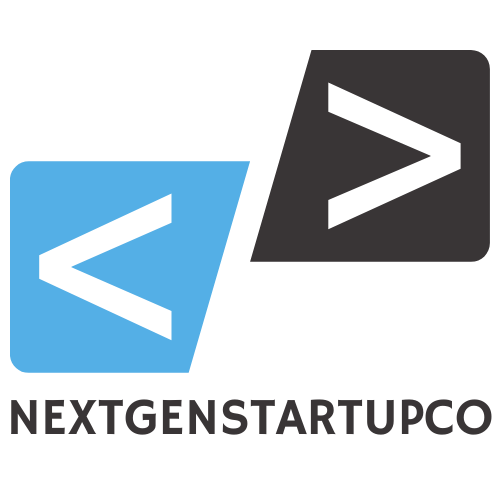In a world where healthcare can feel like navigating a maze blindfolded, Healthcare SaaS emerges as the trusty guide everyone needs. Gone are the days of drowning in paperwork and outdated systems. With a sprinkle of cloud magic, these software solutions streamline processes, making life easier for providers and patients alike.
Table of Contents
ToggleOverview of Healthcare SaaS
Healthcare SaaS represents a significant leap in technology for medical institutions. These platforms streamline operations, enhancing efficiency through automation and real-time data access. Providers benefit from solutions that manage patient records, appointments, and billing seamlessly.
The flexibility of Healthcare SaaS allows organizations to scale operations effortlessly. Providers can integrate systems that comply with regulations and improve patient engagement. Additionally, cloud-based systems promote collaboration among healthcare teams, ensuring everyone has access to crucial information.
Users particularly value the cost-effectiveness associated with Healthcare SaaS. By minimizing the need for extensive hardware and maintenance, it reduces overhead expenses for facilities. This approach leads to better resource allocation and ultimately improves patient care.
Data security remains a top priority for Healthcare SaaS providers. They implement advanced encryption and trade compliance measures, ensuring patient information is safeguarded. Providers must maintain trust, as the consequences of data breaches can devastate an organization’s reputation.
Analytics tools integrated into Healthcare SaaS facilitate informed decision-making. By analyzing trends and patient outcomes, healthcare professionals can tailor treatments and improve overall service effectiveness. Ultimately, these platforms drive better healthcare delivery and higher patient satisfaction.
Adopting Healthcare SaaS solutions benefits not just medical personnel but patients as well. Patients experience easier access to their medical information and can manage appointments online. The convenience enhances their engagement and leads to better health outcomes.
Benefits of Healthcare SaaS

Healthcare SaaS offers numerous advantages, significantly enhancing operational efficiency in medical settings. These benefits include cost efficiency, scalability, and accessibility.
Cost Efficiency
Cost efficiency stands out as a primary benefit of Healthcare SaaS. Organizations reduce upfront investment in hardware and software by utilizing cloud-based solutions. Ongoing maintenance costs drop as providers rely on SaaS vendors for software updates and support. This shift allows healthcare institutions to reallocate resources, focusing funds on patient care rather than IT infrastructure. Additionally, subscription models enable predictable budgeting, making financial planning more straightforward for healthcare organizations.
Scalability
Scalability represents another critical advantage of Healthcare SaaS. Healthcare providers can rapidly adjust their service capacity based on fluctuating patient volumes. Organizations effortlessly add modules or features as they grow, accommodating increased demand without the need for substantial investments. This flexibility promotes a streamlined transition to new technologies or services, allowing institutions to remain competitive in the evolving healthcare landscape.
Accessibility
Accessibility plays a vital role in the benefits of Healthcare SaaS. Providers and patients gain real-time access to vital medical information from any location with internet connectivity. Remote collaboration becomes seamless, enabling healthcare teams to make informed decisions quickly. Patients also enjoy easier management of appointments and medical records through user-friendly platforms. Enhanced access leads to improved patient engagement and satisfaction, ultimately contributing to better health outcomes.
Key Features of Healthcare SaaS
Healthcare SaaS offers several key features that enhance operational efficiency and patient care.
Data Security
Data security stands as a foremost concern in healthcare SaaS. Providers implement robust encryption methods alongside stringent compliance measures to protect patient information. These actions foster trust between patients and healthcare organizations. Regular audits further bolster security by identifying and addressing any vulnerabilities. The use of secure access controls ensures that only authorized personnel can view sensitive data, minimizing the risk of breaches.
Interoperability
Interoperability plays a crucial role in healthcare SaaS, enabling different systems and applications to exchange information seamlessly. This feature enhances care coordination among various providers and simplifies data sharing across platforms, ensuring that healthcare teams access patient information swiftly. Effective interoperability enhances patient outcomes by streamlining workflows and reducing delays in treatment. Additionally, standardizing data formats assists in maintaining clarity and consistency across systems.
User Experience
User experience remains vital in the design of healthcare SaaS solutions. Intuitive interfaces allow both healthcare providers and patients to navigate the systems easily. Simplified access to medical records and scheduling systems promotes engagement among patients. Customizable dashboards can be tailored to meet specific user needs, enhancing satisfaction. Moreover, responsive support teams readily address any queries or issues, ensuring a smooth user experience.
Challenges of Implementing Healthcare SaaS
Healthcare organizations face several challenges when implementing SaaS solutions, impacting their operations and compliance.
Regulatory Compliance
Regulatory compliance presents a significant challenge for healthcare SaaS implementations. Organizations must follow various regulations, such as HIPAA, to protect patient information. Failure to comply can lead to substantial penalties and damage to reputation. Continuous updates to compliance standards require SaaS providers to stay informed and adapt their solutions accordingly. Regular audits play a crucial role in ensuring adherence to these regulations. Staff training enhances awareness, fostering a culture of compliance within the organization. Achieving compliance demands ongoing effort and vigilance throughout the implementation process.
Data Migration
Data migration poses another critical challenge during the transition to Healthcare SaaS. Healthcare organizations often manage vast amounts of data, making it difficult to transfer accurately and securely. Inaccurate migration can result in data loss or corruption, hindering operational efficiency. Proper planning facilitates a smooth transition to the new system. Engaging experienced professionals can streamline the migration process and minimize potential issues. Testing the migrated data ensures its integrity and usability before going fully operational. By addressing these factors, organizations can mitigate risks associated with data migration.
Future Trends in Healthcare SaaS
Emerging technologies continuously shape the landscape of Healthcare SaaS. Artificial intelligence (AI) integration enhances patient care by optimizing workflows and personalizing treatment plans. Data analytics plays a significant role in identifying trends, allowing healthcare providers to improve clinical outcomes.
Telemedicine features gain traction, enabling remote consultations between patients and providers. Many organizations adopt these solutions, which expand access to healthcare services and reduce hospital congestion. Increased demand for remote monitoring tools ensures that patients maintain their health outside clinical settings.
Interoperability becomes paramount, as seamless data exchange improves coordination among disparate systems. Enhanced collaboration among providers leads to more comprehensive patient care. Organizations that prioritize integration with electronic health records (EHRs) streamline their operations significantly.
Compliance with regulations remains essential. Adopting advanced security measures protects sensitive patient information and builds trust. Providers invest in continual training and development to uphold compliance standards and maintain adherence to HIPAA regulations.
User-centered designs emerge as a focus, enhancing the overall experience for both patients and providers. Intuitive interfaces simplify navigation and foster engagement. Customizable dashboards allow users to access relevant information easily.
Cloud-native architectures signify a shift towards more scalable solutions. Organizations recognize the value of flexibility, rapidly adapting to changing patient volumes and demands. Subscription-based models enable predictable financial forecasting, easing budget concerns.
Finally, continuous innovation drives the development of Healthcare SaaS solutions. Providers embrace emerging technologies that support preventive care and host value-based payment models. Organizations that prioritize these trends position themselves to thrive in an evolving healthcare environment.
Healthcare SaaS is reshaping the landscape of medical services by enhancing efficiency and accessibility. Its cloud-based nature allows healthcare providers to manage operations seamlessly while ensuring compliance with regulations.
The cost-effectiveness and scalability of these solutions empower organizations to focus on delivering quality patient care without the burden of extensive IT infrastructure. As technology continues to evolve, the integration of advanced features like AI and telemedicine will further enhance patient experiences and outcomes.
By prioritizing data security and user-centered design, Healthcare SaaS stands poised to lead the future of healthcare, driving innovation and improving the overall quality of care.



